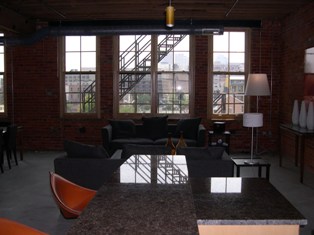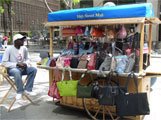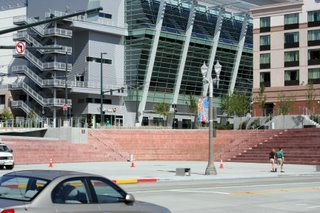 One of the reasons that downtown housing is coming back in Tacoma (at least it hasn't hurt!) is strong support from the City of Tacoma and its partners such as the BIA. Every year, the city and the district partner with local housing developers to market urban living.
One of the reasons that downtown housing is coming back in Tacoma (at least it hasn't hurt!) is strong support from the City of Tacoma and its partners such as the BIA. Every year, the city and the district partner with local housing developers to market urban living.In October 2003, 15 residential properties and more than 40 merchants opened their doors to the public as part of the first Tour of Urban Living event. Several thousand visitors each day toured residential properties, shopped in local stores, visited museums, dined in restaurants and rode the LINK light rail. They strolled the Foss Waterway Esplanade, visited the University of Washington Tacoma campus, attended an event at the Tacoma Dome, and took in a movie, play or nightclub in downtown Tacoma.
The event has continued and grown each year. The BIA supports the event by providing space on our website to promote the event as well as to list downtown housing projects--both for sale and for lease--year round. We also maintain the URL www.downtowntacomaliving.info, which jumps to our website.
The BIA will be partnering with downtown merchants this year on an event preceding this year's Tour of Urban Living; this Block Tie Affair will debut at a local venue (TBD) showcasing local caterers/restaurants, florists, artists, businesses, condominium projects etc. This event will expand the marketing effort from housing to the broader concept of life downtown by providing a passport for downtown eating, shopping, and activities savings during the weekend of the tour.
The intention of organizers is to:
- Welcome and unite downtown dwellers
- Identify and recognize "urban pioneers"
- Recruit "urban ambassadors" to share their stories of why Downtown Tacoma
- Showcase the neighborhoods to new prospective dwellers
- Get people on the streets for energy during the tour
- Promote business for local merchants and restaurants
For details of the 2006 Tour of Urban Living, watch the BIA website. For more information about this new event, contact Patricia Lecy-Davis.




 This posting is the final one in our series identifying the ten
This posting is the final one in our series identifying the ten 


